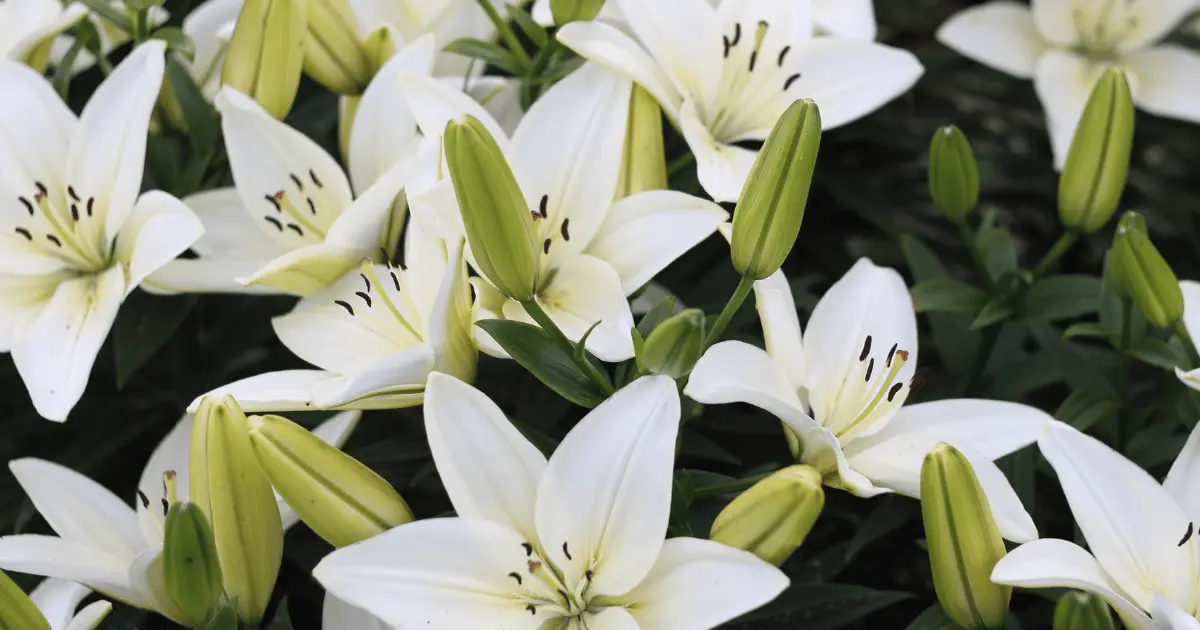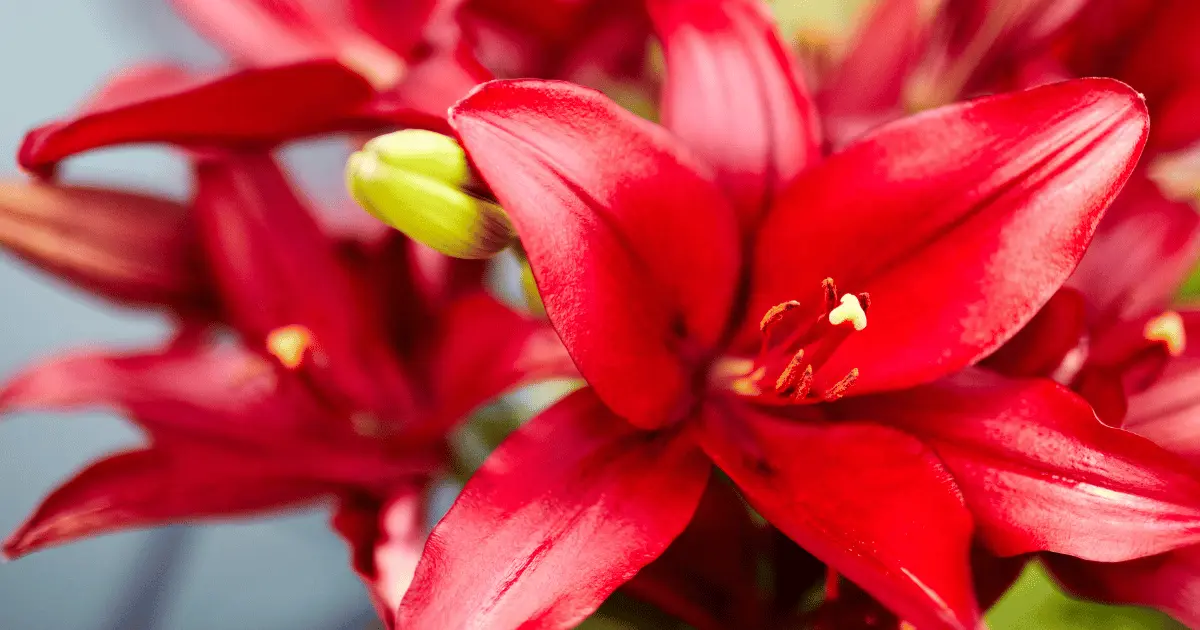Being a gardener can be a blessing and a curse. I mean, being surrounded by beautiful plants daily, how can one pick a favorite?
Lilies are in the top five favorite flowers on anyone’s list. It is hard not to like them with the massive showy blooms that bring a certain elegance to any garden lucky to have them.
They have six plain or strikingly marked petals in beautiful colors, including pink, gold, red, orange, and white. Along with this stunning appearance, they have the world’s most delicious fragrance.
In this article, I will discuss when lilies bloom, how long they do, how to care for a blooming plant, and others.
When do Lilies Bloom?

True lilies bloom at different times between spring and fall. Different varieties have different blooming times, but all fall within this range.
Asiatic lilies bloom first, opening their petals in mid to late spring. This also applies to Martagon lilies and Asiatic hybrids.
The lilies in the Oriental group start to bloom just as Asiatic lilies have started to fade. Their flowers open mid to late summer, with Oriental hybrids blooming last.
Tiger lilies bloom late, from late summer to early fall.
You can take advantage of this slight difference in the blooming period by planting different varieties of lilies to have plants bloom all summer.
How Long Does it Take for a Lily plant to Bloom?
Each variety blooms within a specific range of time. Most Asiatic lilies bloom 30 to 45 days after growth, explaining why they bloom the earliest.
Orientals can take 40 to 90 days, while tiger lilies bloom after 100 to 120 days.
If your newly planted lily hasn’t bloomed after months have passed, do not be too worried. Sometimes, they don’t bloom in their first growing year but do very well in the second.
The same goes for older lilies. They may not bloom on schedule, and as time goes on, they will stop producing flowers.
How Long Do Lilies Blooms Last?
Lily blooms last long as cut flowers and even longer when left in the garden.
A cut lily can last up to two weeks in a vase and three weeks in the ground. Impressive, I know.
Bonus: To make your lily arrangement last longer, cut bulbs that are yet to open. This way, they open inside, and you can enjoy the fresh blooms for some more time.
Do Lilies Rebloom?
The answer to this question is quite heartbreaking for a flower this pretty. Lilies do not bloom more than once a year.
While deadheading spent flowers helps some plants produce newer blooms, that is not the case for lilies. You can remove the faded flowers so your plant does not waste energy.
How to Care for a Blooming Lily Plant

Seeing your garden full of beautiful flowers is great, but if you don’t care for your plants, that joy will quickly turn to dust in your mouth.
Caring for your lily while blooming makes the flowers have brighter colors and stay for longer, and you’ll have a healthy plant heading into the next season.
Producing flowers takes up a lot of energy, and you’ll need to replenish the nutrients used up and leave your plant with a little extra.
Therefore, you should fertilize your blooming lilies every two weeks and increase your watering frequency daily.
You’ll need to get into the habit of deadheading the spent blooms. Removing them will allow the energy to maintain the flower flow back to the plant.
You would want to leave the flowers for as long as you can, but once they turn yellow, removing them is safe.
Cut off the stem but don’t touch the leaves until they have died and turned brown.
This is because the leaves help nourish the bulbs for next year’s blooms so that the plant will return strong and healthy.
Lastly, protect your lilies from pests like deer and rabbits. These critters find lilies delicious and can eat up all the bulbs and blooms, leaving you with a flowerless plant.
How do I Get a Lily Plant to Bloom?
Having a lily that refuses to bloom can be disappointing because the flowers make the gardening effort worth it.
How can you get your lily to open? By giving it the best care possible and being patient. Here’s what you should do.
- A common reason for lilies not flowering is that the bulbs are overcrowded.
The solution is to dig up the bulbs and replant them at an appropriate distance so they can have full access to all the nutrients needed to flower.
This way, they are not struggling to survive barely.
Do this preferably in fall so that they have enough time to adjust to their surroundings before the next blooming season
- Most lily varieties prefer to be in the direct sun. A good six hours of sunlight will provide a lily with enough energy to flower.
If your lily is shaded, you can cut tree branches or foliage blocking the sun from reaching it.
If this won’t work, wait until fall to transplant your plant to a sunnier location in your garden.
Putting compost into the ground around the plant will help it retain moisture, preventing dehydration from the sun.
- Keep the soil where your lily is planted moist but not damp or soggy.
If the soil is too dry, the plant will not have the moisture required to grow and flower properly.
Water only when the soil starts to dry; give your plant a good soak.
- Another reason your lily might not be flowering is that it is not the right plant for your climate.
Asiatic lilies prefer a cold winter to flower, while Easter lilies prefer milder winters to grow and flower.
You should select the lily species that suits your climate.
- Wait until the leaves of your plant have turned yellow or brown at the end of fall before cutting off.
This way, the leaves would have drawn up all the nutrients and energy from the sun to promote flowering the following year.
- You can use a well-balanced NPK fertilizer or tomato feed high in potassium to support your plants’ blooms and root development.
Lastly, exercise patience. Put into practice all these tips above and give your plant enough time to mature.
With good care and patience, you’ll see your lilies flowering well by the following year.
